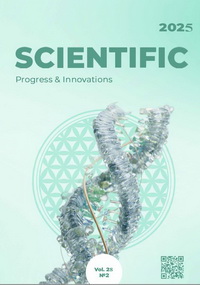The spreading of cattle gastro-intestinal tract helminthoses on farms of Poltava region
DOI:
https://doi.org/10.31210/spi2025.28.02.22Keywords:
cattle, trematodes, helminthes, spreading, prevalence of infectionAbstract
Parasitic diseases of the ruminants’ gastro-intestinal tract are widespread all over the world, particularly in Ukraine, causing considerable economic losses to livestock farms. Invasive pathogens infest animals of all age groups and often create mixed invasions, which have complex interconnections with the host’s organism. Among cattle gastro-intestinal tract helminthoses, digestive tract strongylidoses and dicrocoeliasis are the most wide spread. The purpose of the paper was to study the spreading and peculiarities of the cattle gastro-intestinal tract helminthoses’ development on the farms of Poltava region. The material for the research was the reporting documentation of the Main Department of State Food Consumer Service in Poltava region as to epizootic situation concerning cattle helminthoses. Own coproovoscopic studies were conducted in the laboratory of the Department of Parasitology and Veterinary-Sanitary Expert Examination of Poltava State Agrarian University and on individual farms in Poltava region. The composition of the invasions’ causal agents parasitizing the cattle's gastrointestinal tract was determined, as well as the degree of their infestation and the peculiarities of helminthoses’ development. The statistical data show the considerable spreading of gastrointestinal tract paramphistomatoses, dicrocoeliasis, and strongyles among the cattle. It has been demonstrated by the conducted research that helminthic fauna is represented by Dicrocoelium dendriticum (Rudolphi, 1819), Paramphistomum genus, Fasciola hepatica Linnaeus, 1758 and the nematodes of Strongylida, Trichuris genus and Toxocara vitulorum (Goeze, 1782). According to the conducted study results, it was shown that the average prevalence of infection in animals with the pathogens of gastro-intestinal tract helminthoses made 47.3 % (207/438). The highest EI indicators in the examined animals were in case of the digestive tract stongyles’ (14.15 %) and dicrocoelia (8.44 %) parasitizing. The highest intensity indicators were observed in case of the digestive tract strongyles’ (283.3±41.15 eggs/g of feces) and dicrocoelia (27.5±4.1 eggs/g of feces) parasitizing. It was revealed that two-component infections prevailed over three-component ones.
Downloads
Published
How to Cite
Issue
Section
License
Copyright (c) 2025 Scientific Progress & Innovations

This work is licensed under a Creative Commons Attribution 4.0 International License.

 Creative Commons Attribution 4.0 International Licens
Creative Commons Attribution 4.0 International Licens